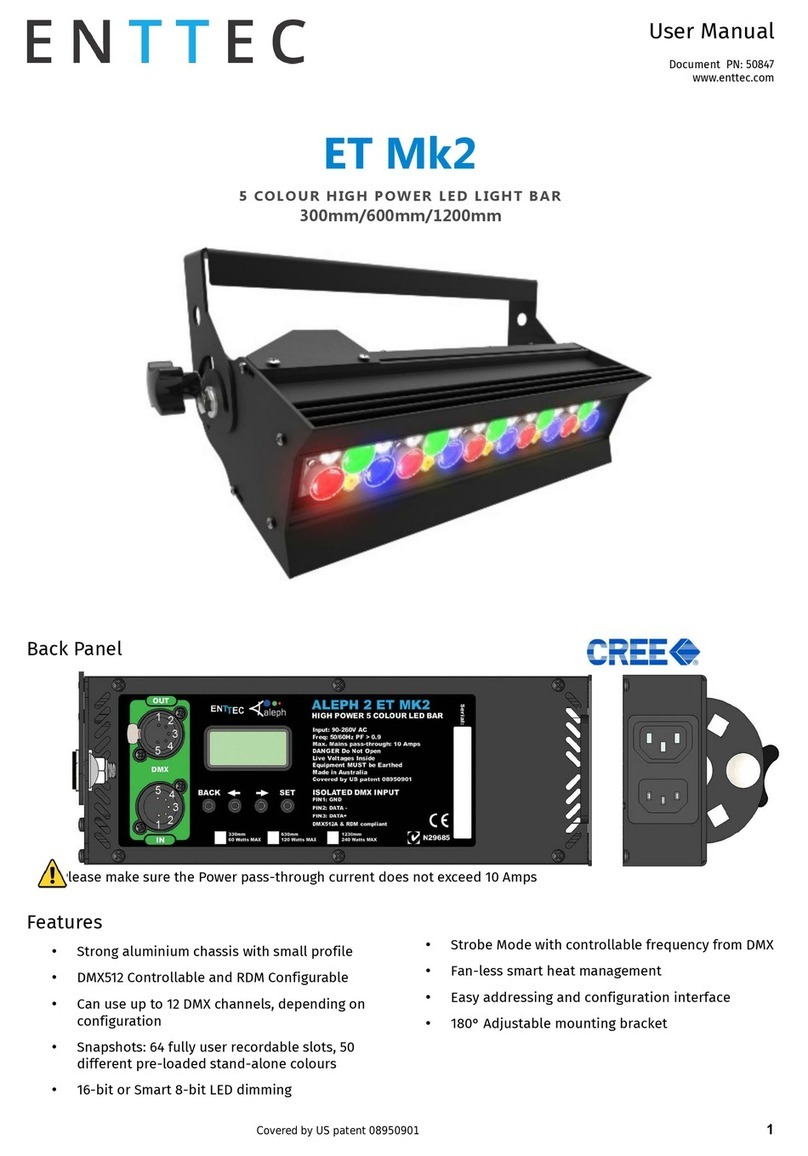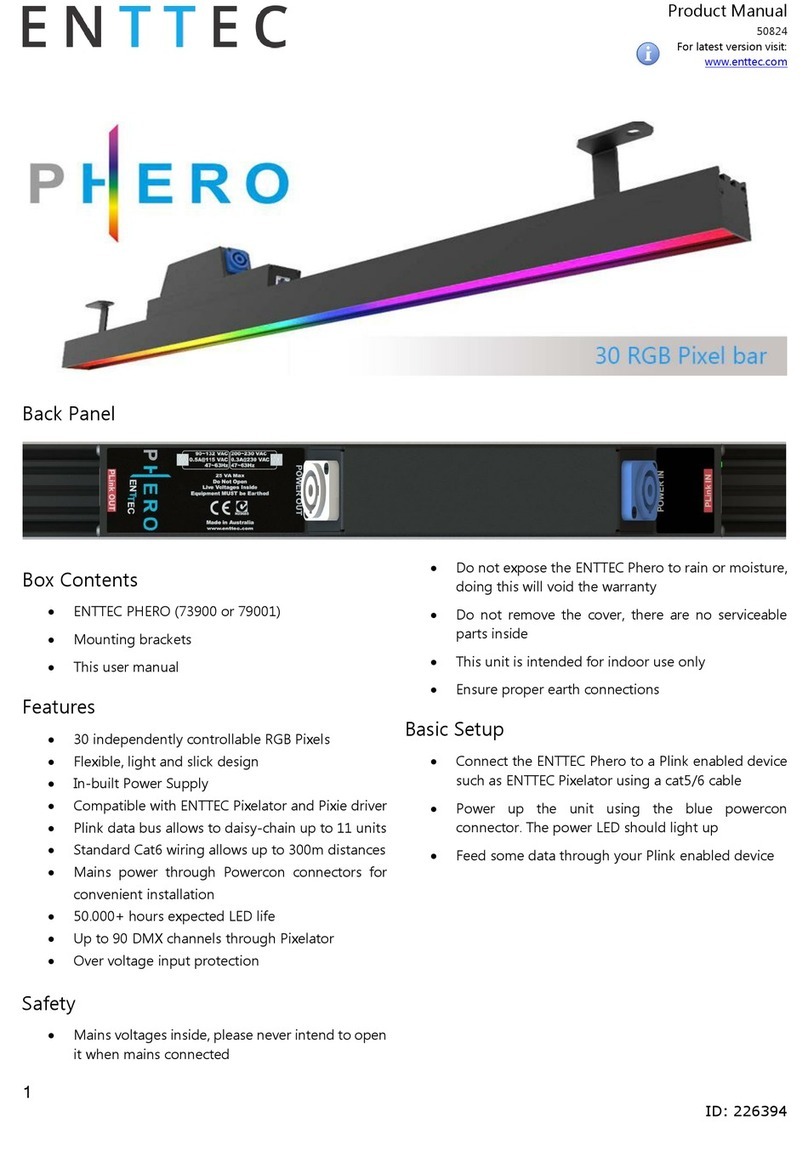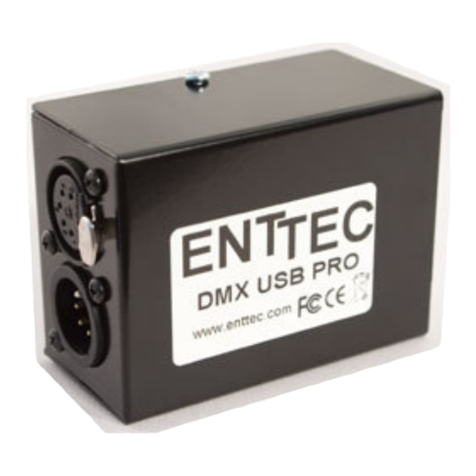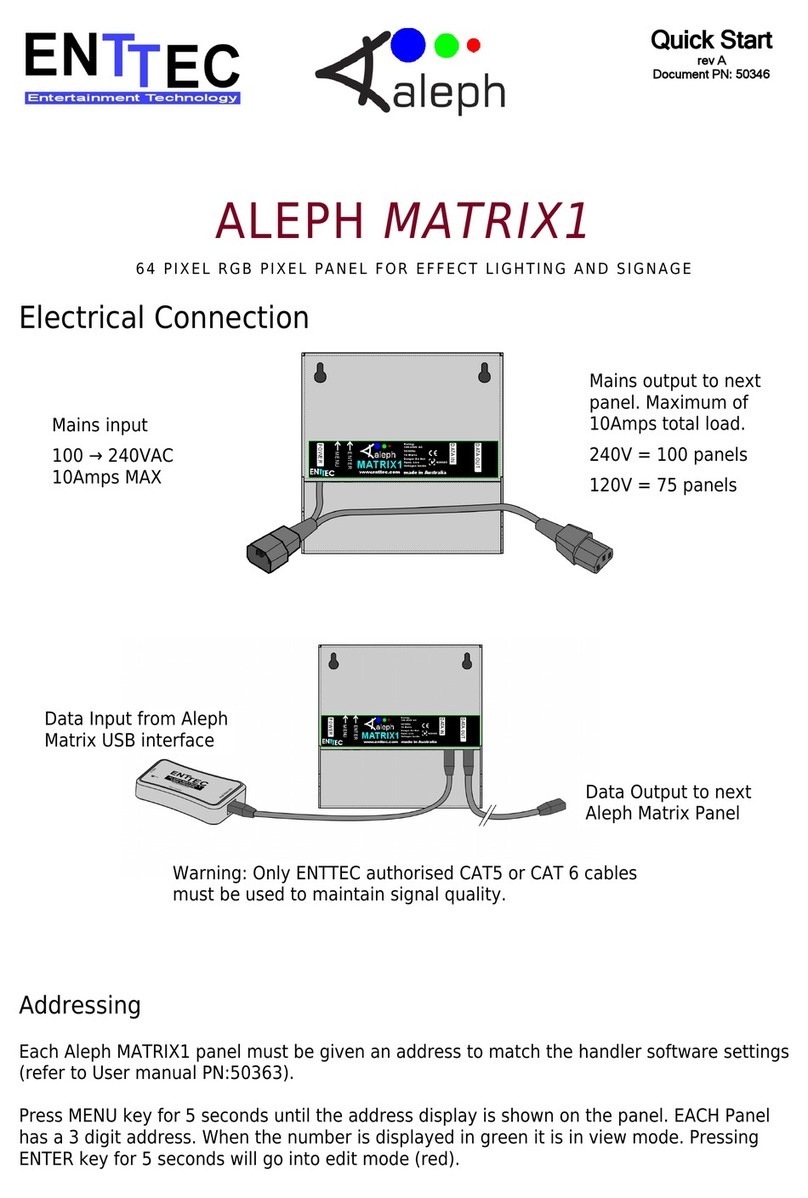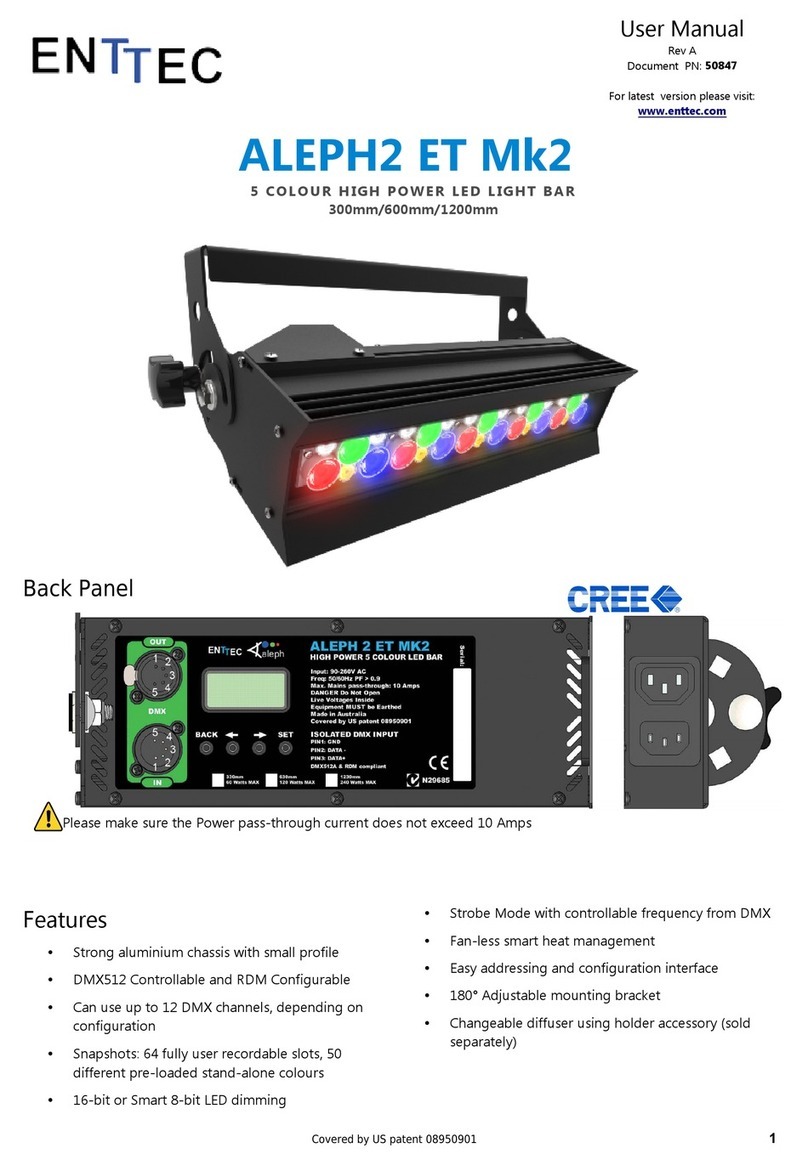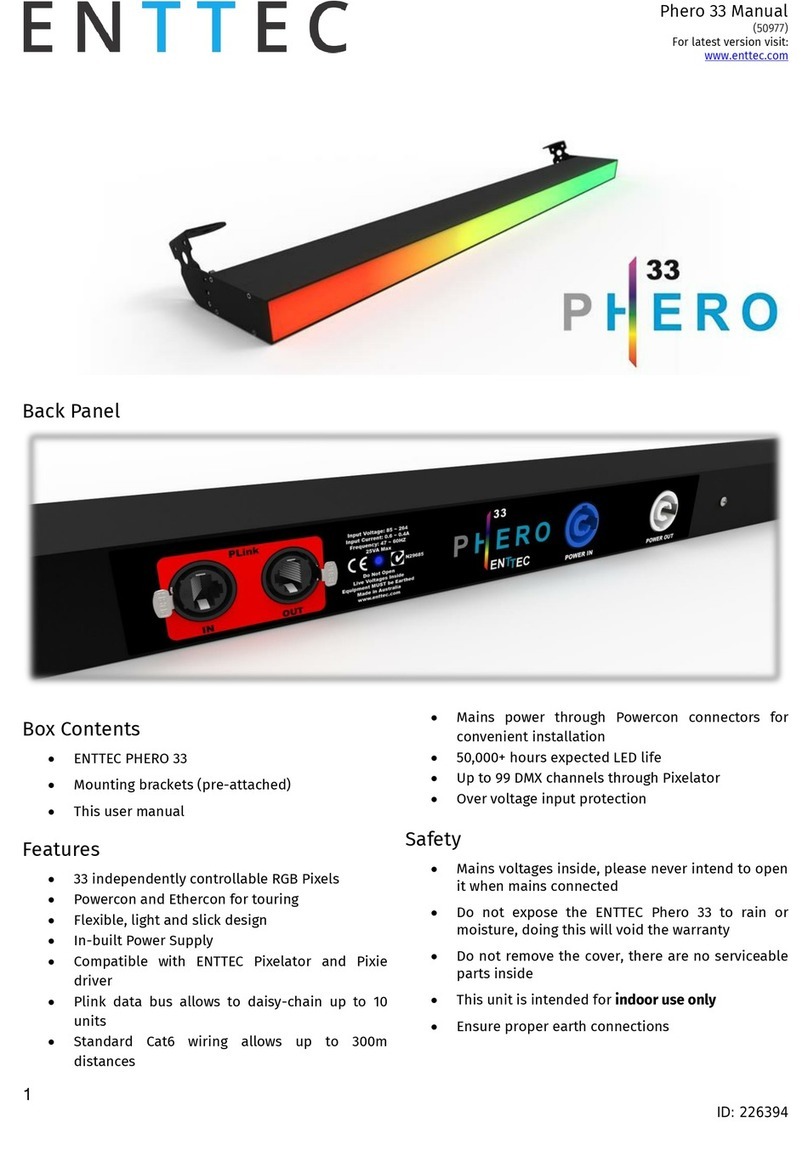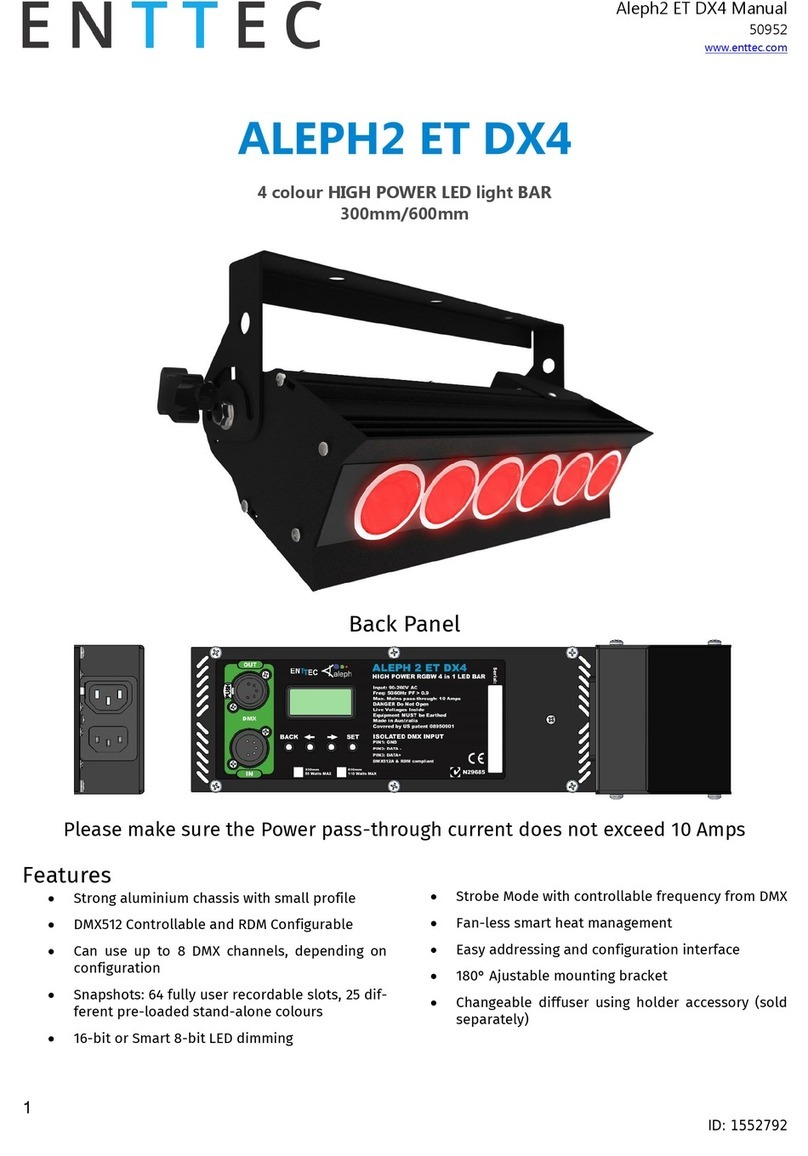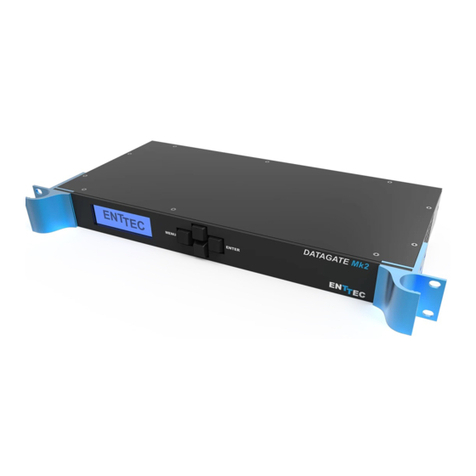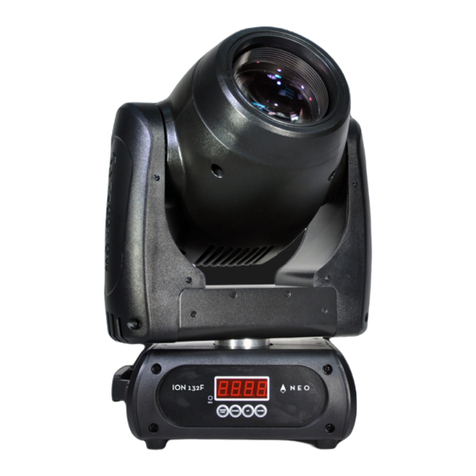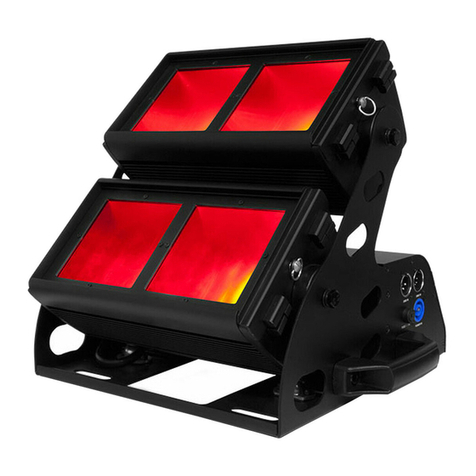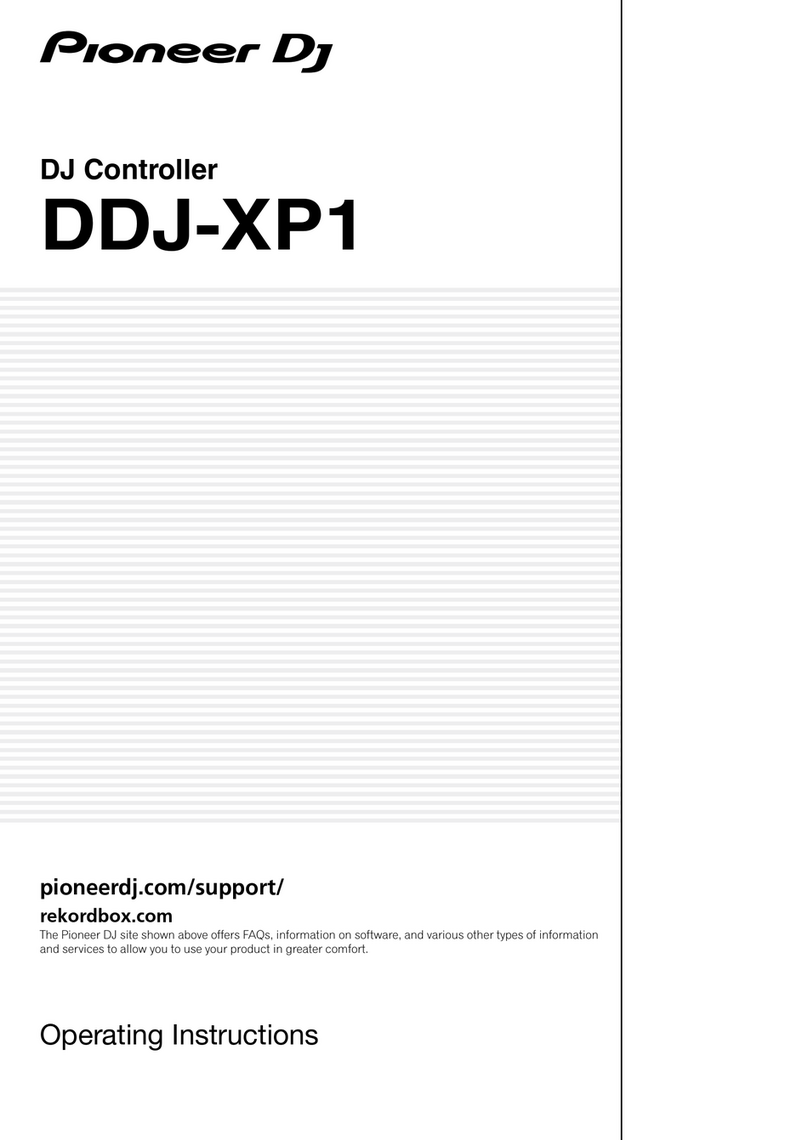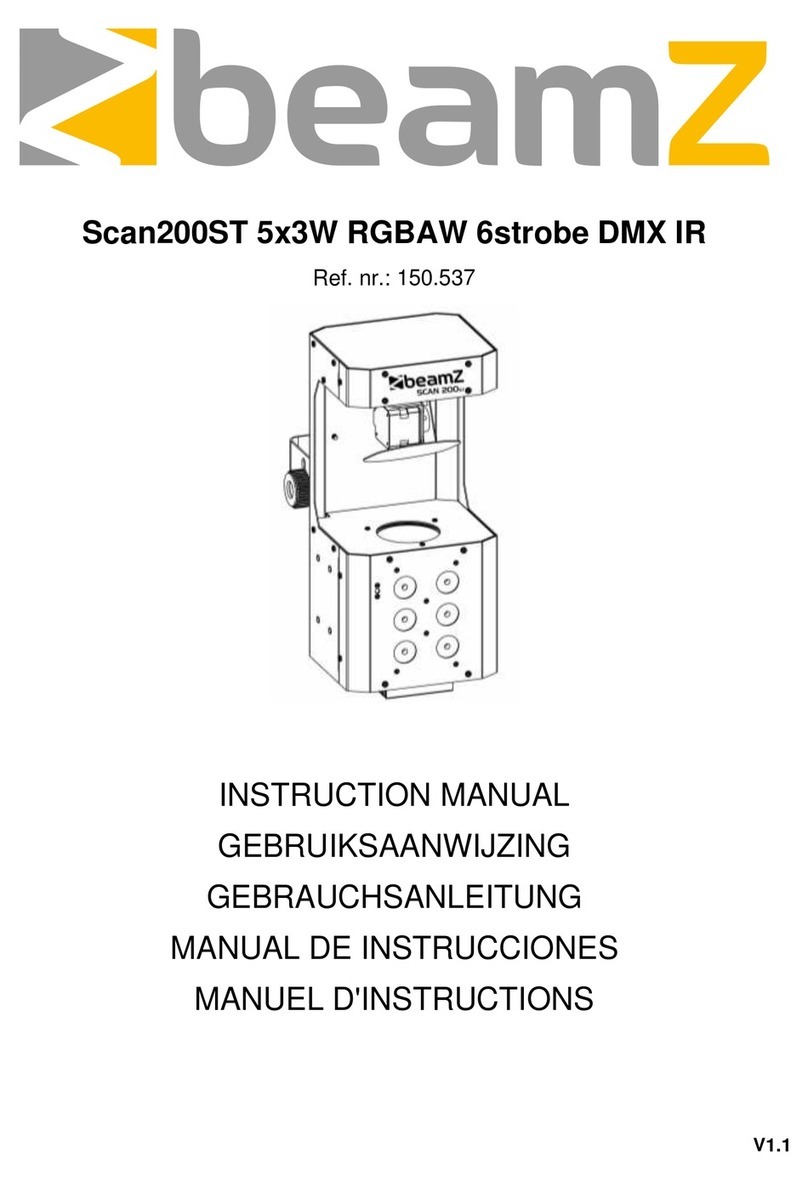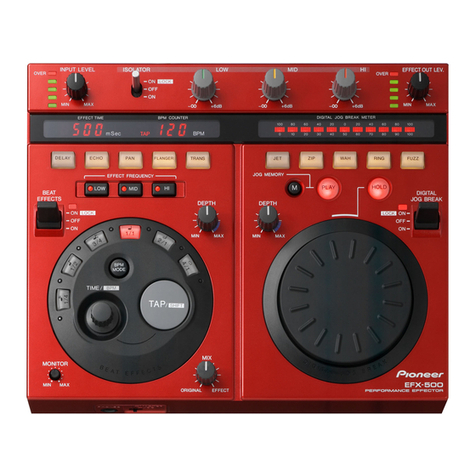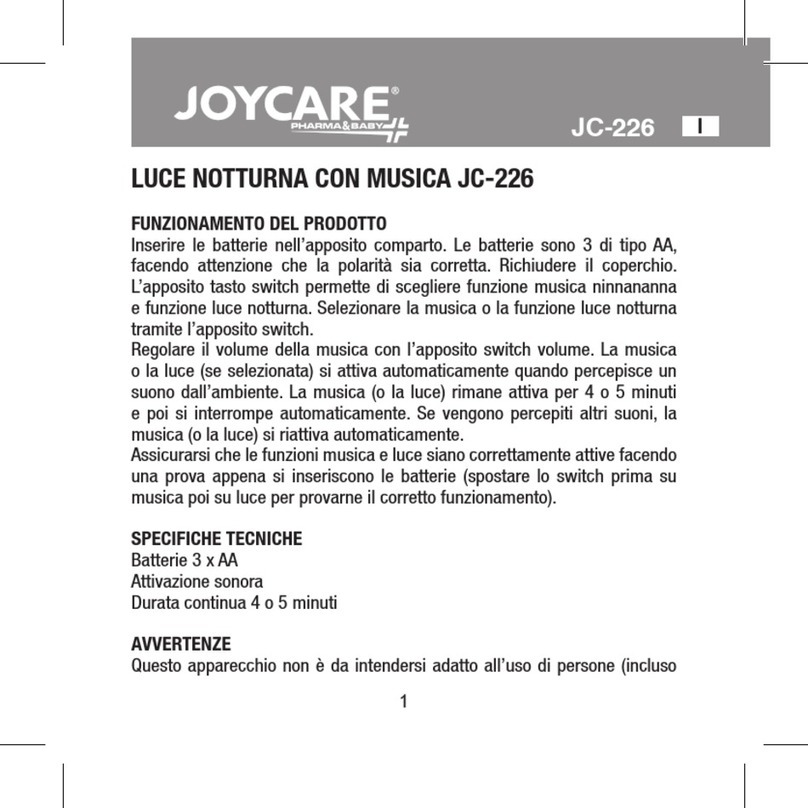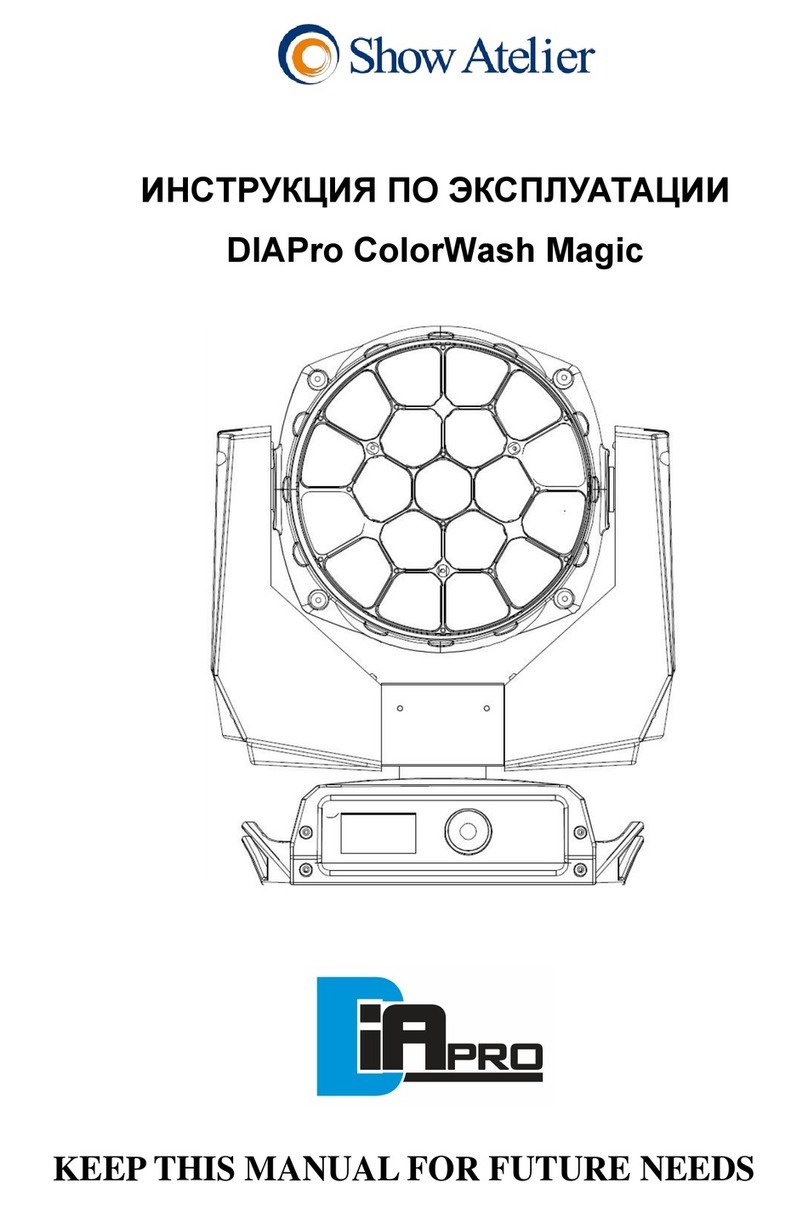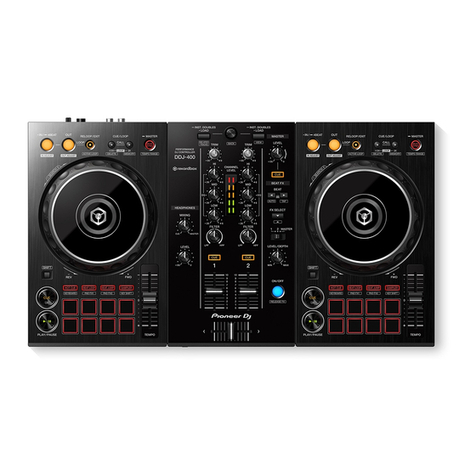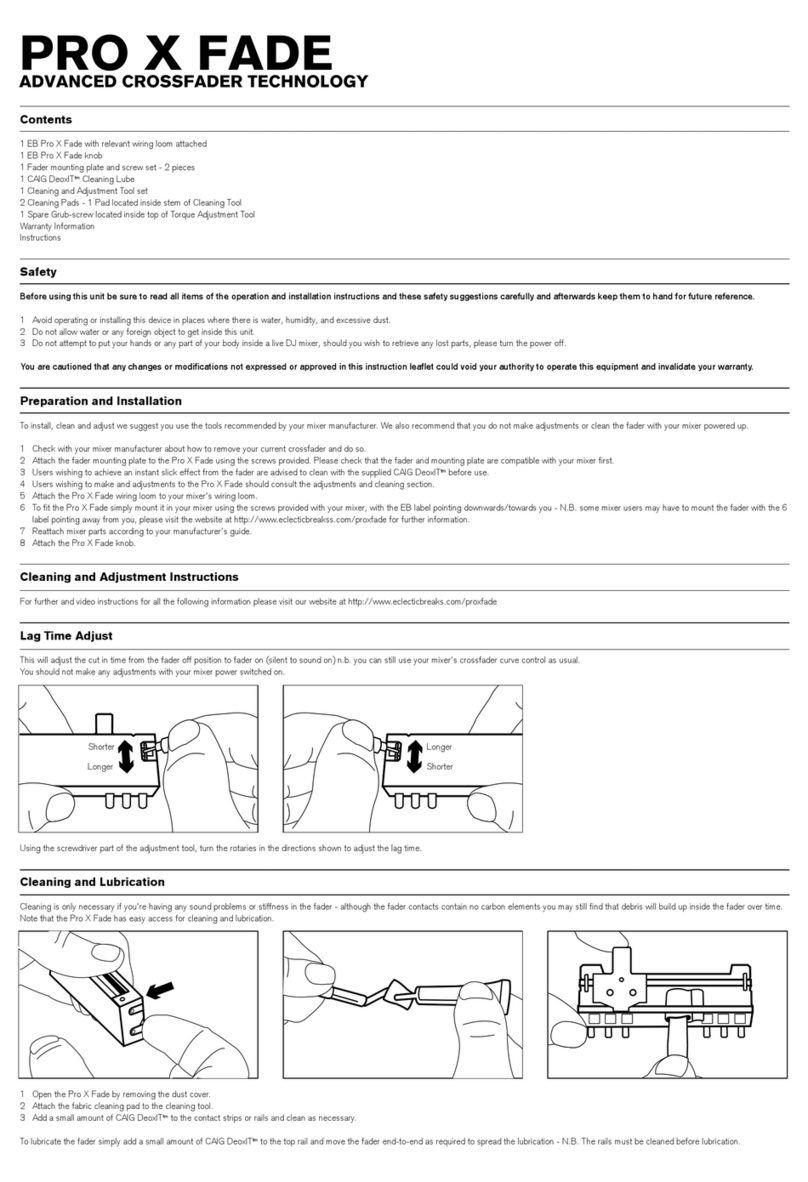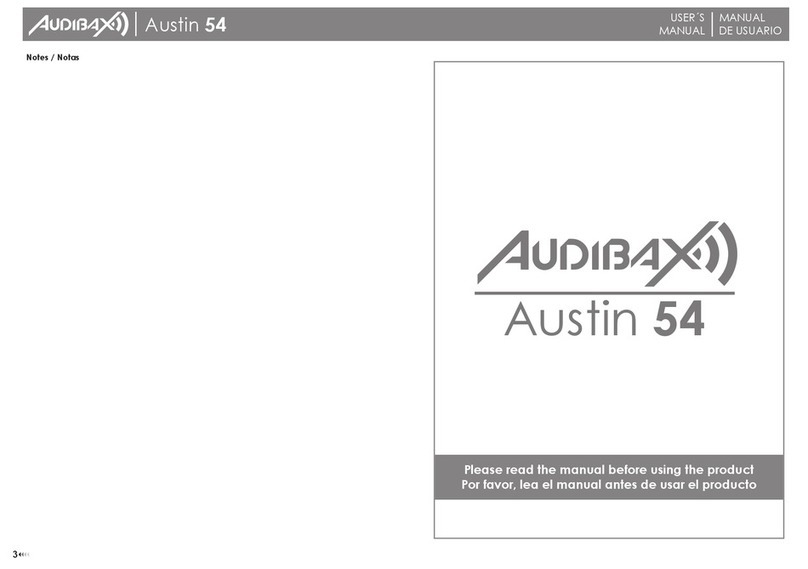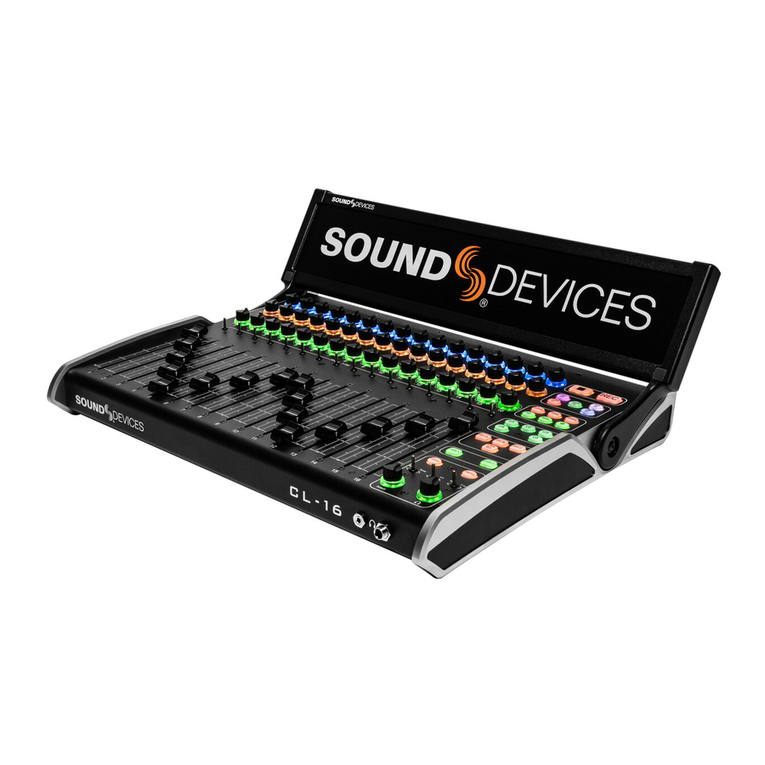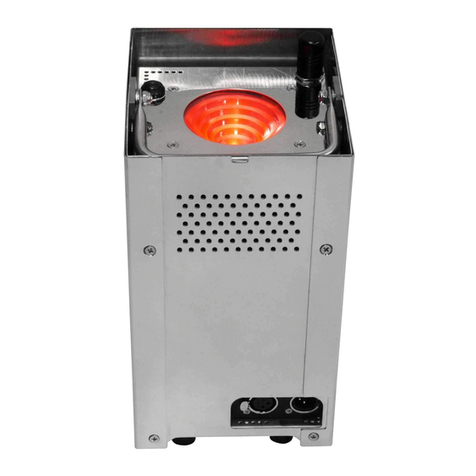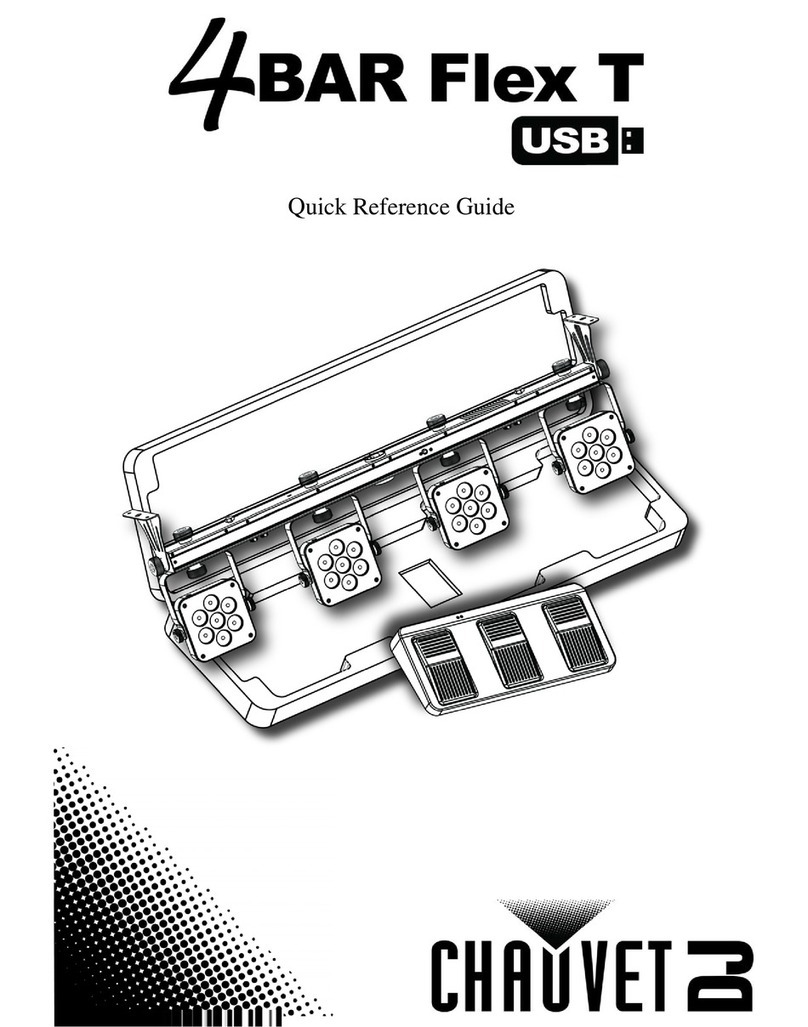Quick Start Manual
MANUAL-DMXIS
for more information visit:
www.enttec.com/ mxis
This iagram shows the wiring for a ual switch. It is also
quite safe to plug in a single switch using a simple mono
1⁄4” jack plug (with no “ring” connection).
DMX Basics
DMX is a stan ar for connecting up stage lighting. It has
been the stan ar in professional lighting for many years,
an nowa ays most affor able light fixtures support
DMX. (For the musically incline , think of DMX as the
“MIDI of the lighting worl ”)
A DMX-capable light fixture will have at least two XLR
connectors (probably marke DMX IN / OUT) an some
way of setting the DMX a ress (either a row of small
switches or a control panel). The XLR
connectors coul have 3 or 5 pins,
epen ing on the manufacturer. The
fixture manual will tell you how
many DMX channels that light uses,
an what features the light has.
Tra itional par cans with halogen lamps (which were
stan ar issue kit for lighting ban s before the arrival of
mo ern LED fixtures) usually plug into a immer pack,
which in turn can be DMX controlle .
If your light fixture is “soun activate ” an has no XLR
connectors, it cannot be controlle by DMXIS.
If your light fixture supports DMX, you can control it with
DMXIS. It oesn’t matter whether it is a immer pack, LED
spot, scanner, moonflower, moving hea or a laser.
DMXIS can control ANY light if that light has DMX
connectors.
DMX A ressing
On each light, you will fin a row of
DIP switches or a small control panel
which you use to enter the DMX
a ress. Consult the a ressing
instructions for your own lights, as
every light can work in a slightly
ifferent way!
Think of DMX a ressing like buil ings on a street. Each
buil ing has its own number (“3 Smith Roa ”, “4 Smith
Roa ”). Large office blocks can occupy a range of
numbers (“22-35 Smith Roa ”). You never see two houses
with the same number, or a jacent office blocks with
overlapping ranges of numbers.
DMX is pretty much the same. Each light fixture has a
unique start a ress, an occupies a range of channels
from that point onwar s. Complex fixtures use more
channels than simple fixtures. Multiple fixtures are not
normally set on the same start a ress, an two fixtures
using a jacent channel numbers must not overlap!
Example: Say you have two 4-channel immer packs, an
two 13-channel scanners. The simplest DMX a ressing
scheme woul be:
•Dimmer A = Ch 1-4
•Dimmer B = Ch 5-8
•Scanner A = Ch 9-21
•Scanner B = Ch 22-34
A fixture’s start a ress oes NOT nee to imme iately
follow the previous fixture. You coul have a immer pack
on Ch 1-4, then a scanner on Ch 18-25. It oesn’t matter that
channels 5-17 are unuse . Why is this important? Well, it
means that in DMXIS you can a ress a fixture so that it
begins on the first fa er of a row, or on a specific page. For
example, Page 1 coul be your immers, page 2 your
scanners, an page 3 your LED spots.
DMX Connectors
For your convenience DMXIS interface has two DMX output
sockets, a 3-pin XLR an a 5-pin XLR. This allows you to
connect your lighting rig using either
5-pin or 3-pin XLR cables. (Although
the official DMX stan ar specifies 5-
pin connections, many lighting
manufacturers routinely use 3- pin
connections on their most popular
lighting fixtures).
5pin DMX OUT :
•Pin 1: Groun
•Pin 2: Data -
•Pin 3: Data +
•Pin 4: NC
•Pin 5: NC
3pin DMX OUT:
•Pin 1: Groun
•Pin 2: Data -
•Pin 3: Data +
3




